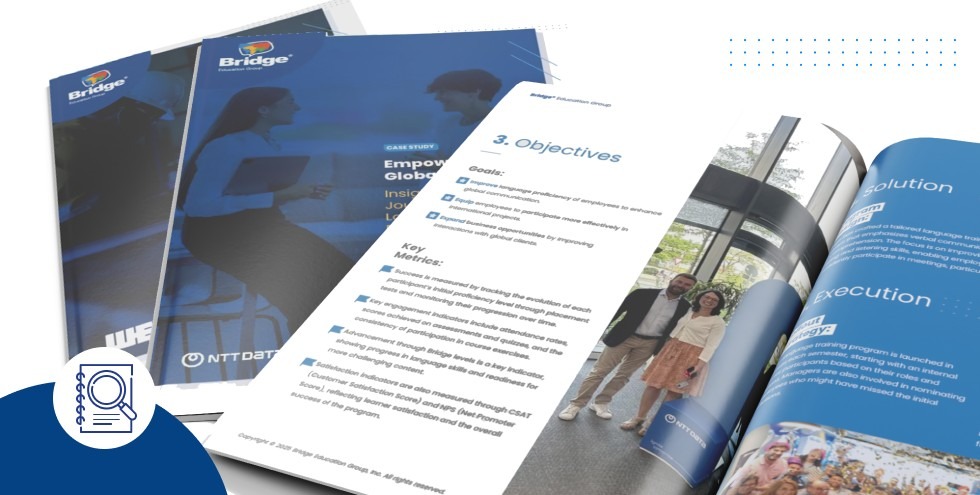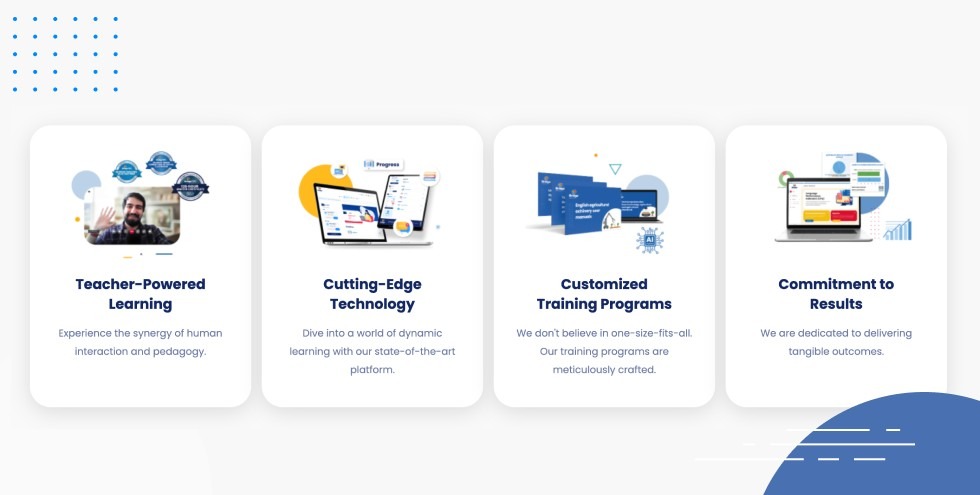In an increasingly globalized business world, companies must adapt to work environments where linguistic diversity is a key asset. When a company expands globally, it is crucial for Human Resources leaders and training managers to promote language learning within their teams. However, this is not the only scenario where building a multilingual workplace is beneficial. Language training also enhances communication with clients and international partners while fostering innovation, strengthening organizational culture, and improving talent retention.
A Boost to Collaboration
Having employees who speak multiple languages allows companies to access a broader and more diverse cultural knowledge base. Multilingual teams tend to be more flexible and adaptable when facing workplace challenges that require problem-solving and efficient teamwork. These teams also benefit in the following ways:
- Linguistic diversity fosters creativity and critical thinking.
- Teams with multilingual skills can analyze situations from various cultural perspectives.
- Multilingual employees communicate more effectively in global teams, reducing misunderstandings and delays.
- Smooth communication facilitates work on multinational projects and strengthens overall productivity.
- It enables better decision-making based on a greater variety of experiences and viewpoints.
Additionally, exposure to different languages and cultures enhances emotional intelligence and empathy within teams, making soft skills increasingly valuable in the corporate world.

Promoting an Inclusive Culture
A multilingual work environment also contributes to a more inclusive and equitable organizational culture. Investing in language training programs sends a clear message: the company values diversity and the growth of its employees.
How does this benefit the company?
- Employees feel that their company is investing in their personal and professional development.
- A more inclusive work environment increases employee engagement and job satisfaction.
- Reducing language barriers allows for better integration of talent from different regions.
- Team cohesion is strengthened, fostering a culture of collaboration and mutual respect.
- It improves equity within the organization, ensuring that all employees have access to opportunities regardless of their native language.
A sense of belonging is reinforced when employees can express themselves and participate actively without fear of language barriers. This reduces employee turnover and enhances the company’s reputation as an attractive place to work.
Competitive Advantages in the Global Market
Companies with multilingual teams have a competitive edge by being able to expand into new markets that neither they nor their competitors have yet reached. Below are some benefits your company can gain through language learning:
- The ability to communicate in the local language builds trust with clients and business partners.
- Teams with language skills can better identify market trends in different countries.
- International growth opportunities increase with the ease of negotiating in various languages.
- Operational costs are reduced by eliminating the need for external translations.
- Marketing and sales strategies in international markets are strengthened, facilitating a deeper connection with the local audience.
- And much more!

Success Stories: Companies That Have Strengthened Their Culture Through Language Training
At Bridge, we understand the importance of creating a multilingual workplace culture. We have had the privilege of bringing international teams closer together by providing language training programs that are fully customized and tailored to our client’s specific needs. Below, you can read about how investing in language training has improved team productivity, boosted employee confidence, and strengthened international relationships.
WEIR Group: Breaking Barriers in the Mining Industry
WEIR Chile, part of the global WEIR Group conglomerate, faced the challenge of improving communication with its subsidiaries across different continents. The implementation of a customized English training program tailored to the specific needs of its teams allowed employees to boost their confidence and language proficiency.
- Greater participation in international projects due to more fluid communication.
- Increased operational efficiency by reducing misinterpretation errors in reports and documentation.
- High participant satisfaction, with a positive impact on job performance.
- Greater autonomy in handling technical documentation without relying on external translations.
NTT Data: Driving Professional Growth Through English Proficiency
For NTT Data, a leading technology company with operations in over 187 countries, having a team that can communicate fluently in English is essential. Investing in personalized language programs has helped build employee confidence.
- Increased capacity to lead international meetings and projects successfully.
- Attendance rate of 89% and a satisfaction rate of 95%, reflecting employees’ commitment to their training.
- Strengthened relationships with global clients by offering more agile and precise communication.

Implementing a Successful Language Program
While each company is unique, there are common strategies to ensure the success of a language training program. Below are some of the most relevant strategies to consider for successfully implementing a language program:
Customization: Design programs aligned with the specific needs of each company.
Accessibility: Offer flexible options such as online classes and schedules adapted to the workday.
Impact measurement: Evaluate participants’ progress through tests and continuous feedback.
Leadership commitment: Ensure that management promotes and supports the initiative to maximize its effectiveness.
Motivation and follow-up: Include incentives for participants and provide ongoing progress tracking.
Use of technology: Implement digital platforms that facilitate language practice in real workplace contexts.
Integration with organizational culture: Promote language use in meetings, emails, and internal activities to reinforce learning.

Language Training as a Growth Strategy
Investing in employees’ language development not only improves communication but also fosters innovation, strengthens organizational culture, and positions the company in a competitive global market.
For HR leaders, integrating effective language programs can make a significant difference in building a multilingual culture that benefits both the organization and its employees. A multilingual team is not only more efficient but also more resilient and better prepared for future challenges.
Companies that prioritize language training position themselves better in the global economy and enhance their reputation as attractive employers. With the right strategy, a multilingual team can become a key pillar for any organization’s long-term success.










